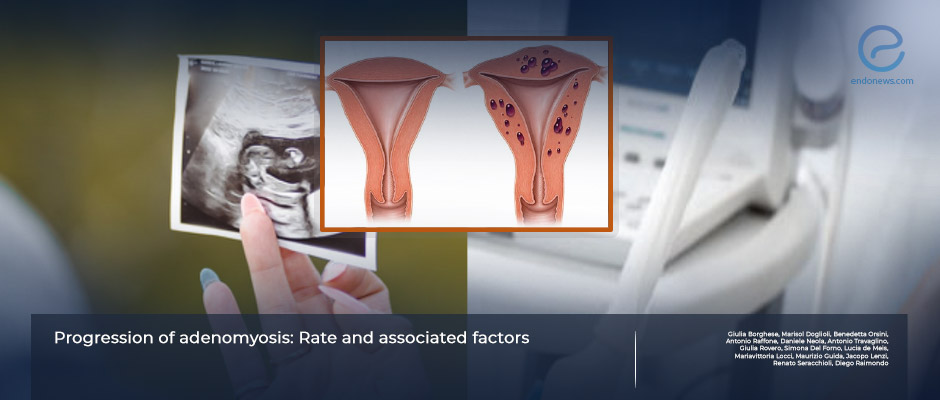Study Identifies Factors Associated With the Risk of Adenomyosis Progression
Jul 2, 2024
Severe period pain, pain during defecation, chronic pelvic pain, and the presence focal adenomyosis in the outer myometrium are associated with the risk of adenomypsis progression.
Key Points
Highlights:
- The rate of adenomyosis progression is 21.3% over one year.
- The rate of disease progression is higher among patients who are hormonally untreated compared to those who are hormonally treated.
- Factors associated with disease progression included severe period pain, pain during defecation, chronic pelvic pain, and the presence of focal adenomyosis in the outer myometrium.
Importance:
- The findings of this study can help identify patients at a higher risk of disease progression and tailor their follow-up.
What’s done here:
- This is a single-center, prospective, observational, cohort study performed at a tertiary referral center.
- Researchers analyzed 221 patients who were diagnosed with adenomyosis with ultrasound.
Key results:
- The disease of 47 patients progressed after one year.
- The disease progression of hormonally untreated patients was 30.77%
- The disease progression rate of hormonally treated patients was 18.34%
Lay Summary
The disease progression rate of adenomyosis at one-year follow-up is 21.3%, according to a new study published in the International Journal of Gynecology & Obstetrics. For hormonally untreated patients this rate is 30.77% while for those who were hormonally treated, it is 18.34%. The presence and/or worsening of painful symptoms like severe period pain, pain during defecation, chronic pelvic pain, and the presence of focal adenomyosis in the outer myometrium (the middle layer of the uterine wall) may help identify patients who are at a higher risk of disease progression and tailor their follow-up, according to the authors of the study.
To assess the rate of progression of adenomyosis and identify factors associated with this progression, a team of researchers from Italy led by Dr. Diego Raimondo from the Division of Gynecology and Human Reproduction Physiopathology, IRCCS Azienza Ospedaliero Universitaria in Bologna conducted a single center, prospective, observational, cohort study at a tertiary referral center.
The researchers analyzed 221 patients diagnosed with adenomyosis using ultrasound between May and August 2022. They divided the patients into two groups: those whose disease progressed, i.e. whose uterus increased in volume by more than 20%, and those whose disease was stable or regressed, i.e. whose uterine volume decreased or increased by 20% or less after one year. The primary outcome measure was the rate of progression of adenomyosis. The secondary outcome measure was the association of disease progression with demographic and clinical factors.
The results showed that the disease of 47 patients progressed after one year corresponding to an overall progression rate of 21.3%. The rate of adenomyosis progression was 30.77% among patients who were hormonally untreated and 18.34% among those who were hormonally treated.
Factors associated with disease progression were the presence of focal adenomyosis of the outer myometrium, moderate to severe period pain, chronic pelvic pain, pain during defecation, and worsening of chronic pelvic pain.
Research Source: https://pubmed.ncbi.nlm.nih.gov/38738458/
adenomyosis progression hormonal treatment

